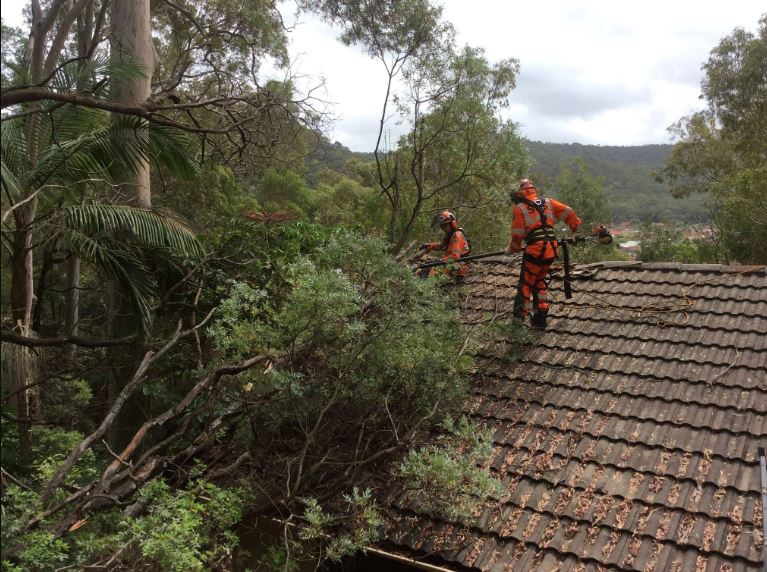The Central Coast was the most active region for storm-related incidents across the state in the first half of this year, recording hundreds more incidents than any other area.
From January to June, the NSW SES responded to a total of 18,015 jobs, including 12,044 storm incidents and 3,796 flood incidents.
Of these, 570 were recorded at Wyong SES and 521 at Gosford SES.
The next highest number of incidents was at Ku-ring-gai (452).
The Wyong SES unit led the state in incident responses, tackling 570 storm-related incidents and 448 flood-related jobs.
NSW SES Acting Deputy Commissioner Nicole Hogan said significant storm activity this year has meant volunteers have been actively assisting their local communities in both preparation and response efforts.
“Many of the incidents reported in the first six months of this year have been due to leaking roofs, missing roof tiles and trees falling onto homes and cars due to heavy winds and rainfall,” she said.
SES units in Gosford, Wollongong, Sutherland, and Ku-ring-gai collectively responded to 1,947 incidents related to floods and storms during this period.
Responses included tasks such as clearing fallen trees, managing home inundations, and addressing property damage caused by severe weather conditions.
With storms more likely between October and March, Hogan highlighted the importance of community members preparing their homes and properties now.
“People can prepare for storms by cleaning their gutters, downpipes, and drains to prevent water overflow under eaves and into their roofs,” she said.
“Securing loose items around yards and balconies can also prevent damage from strong winds picking up outdoor items such as trampolines and roofing iron.”

Executive General Manager of Home Claims at AAMI, Alli Smith, said her team had been kept very busy for half of the year.
“Our insurance claims data backs up what many of us have been feeling – it’s been a very wet start to 2024,” she said.
“Our hot spots show we’ve had several significant weather events right across the state, with more than 9,000 storm and flood home insurance claims in the first six months.
“As a result of this wet weather, our customers experienced everything from water ingress into their homes to damaged roofs and flooding.
“While storms are a normal part of everyday life, it is important we don’t become complacent.
“Extreme weather by its very nature is unpredictable, so we encourage homeowners to prepare now to reduce the impact on their home.”
AAMI top tips for preparing your home for significant weather events include: securing and putting away loose items around your backyard or balcony; trimming trees and branches that could fall onto your home or car; cleaning your gutters, downpipes and drains of leaves and debris; inspecting retaining walls; ensuring there’s no corrosion, loose fittings or rotting timber around your property; and inspecting your roof for damaged or loose tiles.



